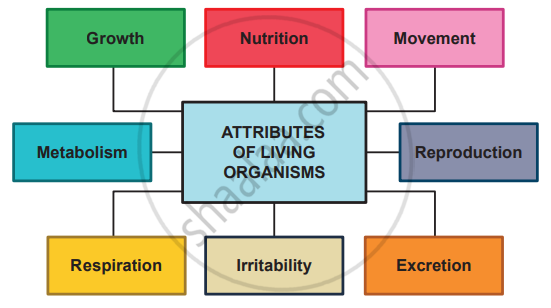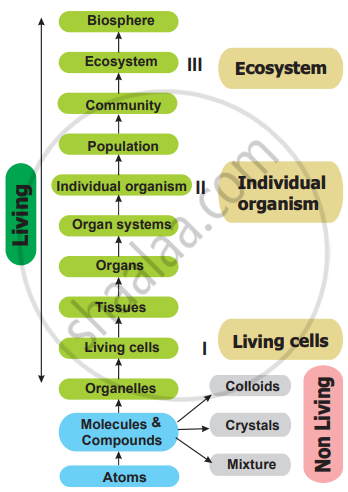Topics
Living World
- What is ‘Living’?
- Taxonomical Aids
Systematics of Living Organisms
- Systematics of Living Organisms (Introduction)
- Systematics of Living Organisms (Introduction)
- Concept of Systematics
- Concept of Systematics
- Classification of Taxonomy
- Classification of Taxonomy
- Three Domains of Life
- Three Domains of Life
- Chemotaxonomy
- Chemotaxonomy
- Numerical Taxonomy
- Numerical Taxonomy
- Cladogram
- Cladogram
- Phylogeny
- Phylogeny
- DNA Barcoding
- DNA Barcoding
- Taxonomic Hierarchy of Living Organisms: Unit of Classification
- Taxonomic Hierarchy of Living Organisms: Unit of Classification
- Taxonomic Hierarchy
- Taxonomic Hierarchy
- Units of Classification
- Units of Classification
- Binomial Nomenclature
- Binomial Nomenclature
- Salient Features of Five Kingdoms
- Salient Features of Five Kingdoms
- Acellular Organisms
- Acellular Organisms
Kingdom Plantae
- Classification of Kingdom Plantae
- Salient Features of Major Plant Groups Under Cryptogams
- Salient Features of Major Plant Groups Under Phanerogams
- Plant Life Cycle and Alternation of Generations
Kingdom Animalia
- Criteria Used for Animal Classification
- Animal Body Plan
- Animal Classification
Cell Structure and Organization
- Cell: Structural and Functional Unit of Life
- Types of Cells
- Components of Eukaryotic Cell
Biomolecules
- Biomolecules in Living System
- Biomolecules in the Cell
- Carbohydrates
- Lipids
- Proteins
- Nucleic Acids
- Enzymes
- Nature of Enzyme Action
- Nomenclature of Enzymes
- Classification of Enzymes
- Mechanism of Enzyme Action
- Enzyme - Substrate Interactions
- Factors Affecting Enzyme Activity
- Metabolism
- Metabolic Pool
- Secondary metabolites (SMs)
Cell Division
- Introduction of Cell Division
- Cell Cycle
- Types of Cell Division
- Significance of Mitosis
- Significance of Mitosis
Plant Tissues and Anatomy
- Tissues - “The Teams of Workers”
- Meristems or Meristematic Tissues
- Permanent Tissue
- Tissue System
- Secondary Growth in Plants
- Wood
- Cork Cambium and Secondary Growth
- Anatomy of Root, Stem and Leaf
Morphology of Flowering Plants
- Division II- Angiosperms
- Morphology
- Study of Some Important Families
Animal Tissue
Study of Animal Type : Cockroach
- Habit and Habitat
- Systematic Position
- External Morphology
- Body Cavity
- Digestive System of Cockroach
- Circulatory System Or Blood Vascular System
- Human Respiratory System
- Reproduction System
- Interactions with Mankind
Photosynthesis
- Photosynthesis: Food-Making Process in Plants
- Chloroplasts
- Nature of Light
- Mechanism of Photosynthesis
- Light Dependent Reaction (Hill Reaction \ Light Reaction)
- Photophosphorylation
- Light Independent Reactions (Dark Reaction \ Biosynthetic Phase)
- Photorespiration
- C4 Pathway Or Hatch-slack Pathway
- Cam - Crassulacean Acid Metabolism
- Factors Affecting Photosynthesis
Respiration and Energy Transfer
- Formation of ATP
- Respiration
- Types of Respiration: Aerobic and Anaerobic Respiration
- Phases of Respiration: Glycolysis
- Phases of Respiration: Pyruvate Oxidation (Link Reaction)
- Phases of Respiration: Electron Transport System (Ets) and Oxidative Phosphorylation
- Phases of Respiration: Tricarboxylic Acid Cycle (Citric Acid Cycle Or Kreb’s Cycle)
- Phases of Respiration: Electron Transport Chain (Electron Transfer System)
- Phases of Respiration: Fermentation
- Respiratory Balance Sheet
- Amphibolic Pathways
- Utility of Stepwise Oxidation
- Respiratory Quotient (R.Q.)
Human Nutrition
- Nutrients and Nutrition
- Component of Food
- Human Digestive System
- The Mouth and Buccal Cavity
- The Salivary Glands
- The Teeth and Its Structure
- Tongue
- The Food Pipe/Oesophagus
- The Stomach
- The Small Intestine
- Pancreas
- The Large Intestine
- Liver
- Physiology of Digestion
- Absorption of Food
- Assimilation of Food
- Egestion of Food
- Nutritional and Digestive Tract Disorders
Excretion and Osmoregulation
- Excretion
- Modes of Excretion: Ammonotelism, Ureotelism, and Uricotelism
- Human Excretory System
- Kidney and Its Internal Structure
- Kidney Tubule (Nephrons)
- Function of the Kidney - “Production of Urine”
- Concentration of Urine
- Composition of Urine
- Accessory Excretory Organs
- Common Disorders of the Urinary System
Skeleton and Movement
- Movements and Locomotion
- Location and Structure of Skeletal Muscles
- Working of Skeletal Muscles
- Mechanism of Muscle Contraction
- Physiology of Muscle Relaxation
- Relaxation of Muscle Fibres
- Skeletal System
- Group of Skeleton
- Types of Joints
- Disorders Related to Muscles
- Disorders Related to Bones
- What is ‘Living’?
- Characteristics of living organisms
- Growth
- Reproduction
- Cellular structure
- Response to stimuli (Consciousness)
- Homeostasis
- Metabolism
- Difference between anabolism and catabolism
The Living World
Earth has formed some 4.6 billion years ago. Life on earth exists within a complex structure called the biosphere. There exist many mysteries and wonders in the living world. The extraordinary habitats in which we find living organisms, be it cold mountains, deciduous forests, oceans, freshwater lakes, deserts, or hot springs, leave us speechless. The beauty of a galloping horse, of the migrating birds, the valley of flowers, or the attacking shark evokes awe and a deep sense of wonder. The ecological conflict and cooperation among members of a population and among populations of a community or even the molecular traffic inside a cell make us deeply reflect on – what
indeed is life? This question has two implicit questions within it. The first is a technical one and seeks an answer to what living is as opposed to non-living, and the second is a philosophical one and seeks an answer to what the purpose of life is. As scientists, we shall not attempt to answer the second question. We will try to reflect on – what is living?
-
What is living?
When we try to define ‘living’, we conventionally look for distinctive characteristics exhibited by living organisms. Growth, reproduction, ability to sense the environment and mount a suitable response come to our mind immediately as unique features of living organisms. One can add a few more features like metabolism, ability to self-replicate, self-organize, interact, and emergence to this list.
-
Attributes of living organisms:

1. Growth:
Growth is an intrinsic property of all living organisms through which they can increase cells both in number and mass. Unicellular and multicellular organisms grow by cell division. In plants, growth is indefinite and occurs throughout their life. In animals, growth is definite and occurs for some period. Growth in non-living objects is extrinsic. Mountains, boulders, and sand mounds grow by simple aggregation of material on the surface. Living cells grow by the addition of new protoplasm within the cells. Therefore, growth in living thing is intrinsic. In unicellular organisms like Bacteria and Amoeba, growth occurs by cell division, and such cell division also leads to the growth of their population. Hence, growth and reproduction are mutually inclusive events.
2. Cellular structure:
All living organisms are made up of cells, which may be prokaryotic or eukaryotic. Prokaryotes are unicellular, lack membrane bound nuclei and organelles like mitochondria, endoplasmic reticulum, Golgi bodies, and so on (Example: Bacteria and Blue-green algae). In Eukaryotes, a definite nucleus and membrane bound organelles are present. Eukaryotes may be unicellular (Amoeba) or multicellular (Oedogonium).
3. Reproduction:
Reproduction is one of the fundamental characteristic features of living organisms. It is the tendency of a living organism to perpetuate its own species. There are two types of reproduction, namely asexual and sexual. Asexual reproduction refers to the production of the progeny possessing features more or less similar to those of parents. Sexual reproduction brings out variation through recombination. Asexual reproduction in living organisms occurs by the production of conidia (Aspergillus, Penicillium), budding (Hydra and Yeast), binary fission (Bacteria and Amoeba) fragmentation (Spirogyra), protonema (Mosses), and regeneration (Planaria). Exceptions are the sterile worker bees and mules.
4. Response to stimuli:
All organisms are capable of sensing their environment and respond to various physical, chemical, and biological stimuli. Animals sense their surroundings by sense organs. This is called Consciousness. Plants also respond to the stimuli. Bending of plants towards sunlight, the closure of leaves in touch-me-not plant to touch are some examples for response to stimuli in plants. This type of response is called Irritability.
5. Homeostasis:
The property of self-regulation and tendency to maintain a steady-state within an external environment that is liable to change is called Homeostasis. It is essential for the living organism to maintain internal conditions to survive in the environment.
6. Metabolism:
The sum of all the chemical reactions taking place in a cell of a living organism is called metabolism. It is broadly divided into anabolism and catabolism.
| Anabolism | Catabolism |
| Building up process | Breaking down process |
| Smaller molecules combine to form larger molecule |
Larger molecule break into smaller units |
| Chemical energy is formed and stored | The stored chemical energy is released and used |
| Example: Synthesis of proteins from amino acids | Example: Breaking down of glucose to CO2 and water |
Movement, Nutrition, Respiration, and Excretion are also considered as the property of living things. The levels of organization in living organisms begin with atoms and end in the Biosphere. Each level cannot exist in isolation, instead they form levels of integration as given below.
